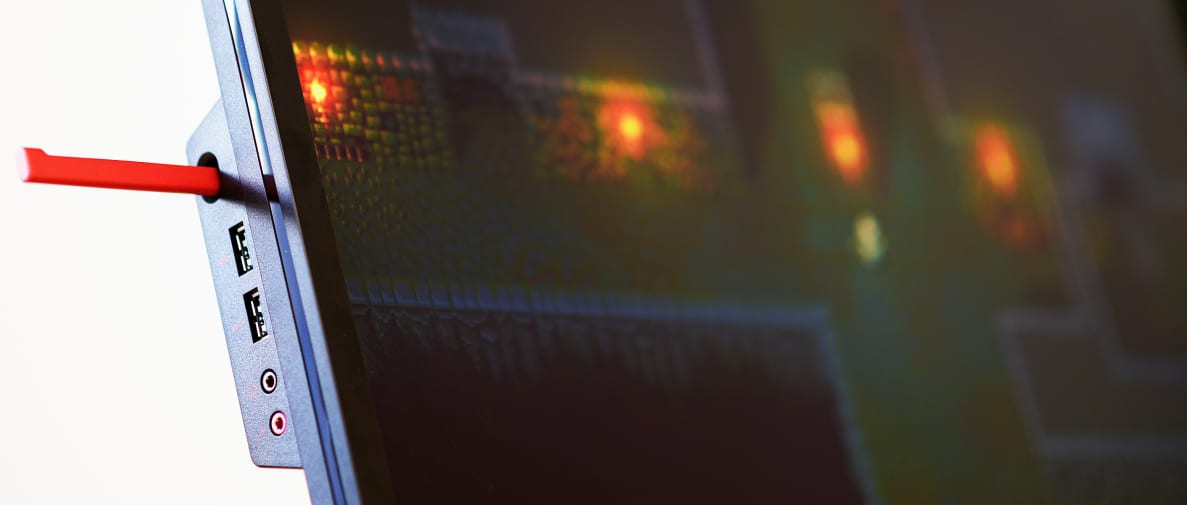Like its predecessor, the XL2420TE, the 30T makes use of a TN (Twisted Nematic) panel. TN panels are older and generally don't produce as good a picture as newer IPS panels. Why use a monitor with worse image quality? Because TN panels are up to 50% faster than similar IPS monitors.
That speed is a boon to gamers who are obsessed with it. The 30T otherwise doesn't improve upon its predecessor's performance, but it does up the ante in terms of design and features. The core specs of the XL2430T—panel type, response time, and native resolution—are the same as the 2420TE. But as the saying goes, if it ain't broke...
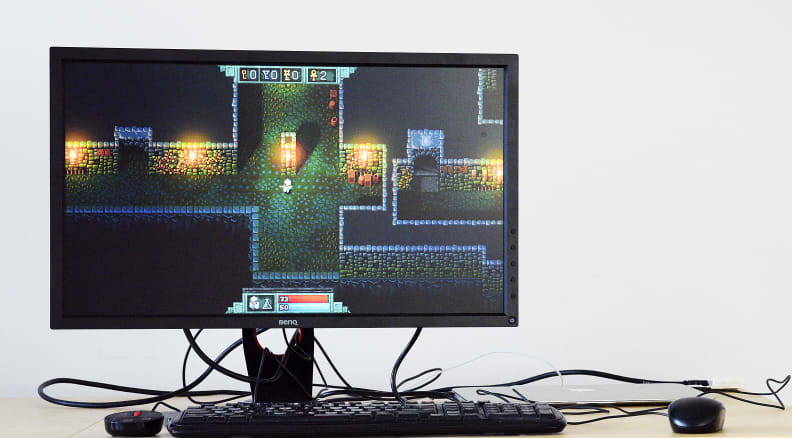
The XL2430T makes awesome improvements upon the software and physical features of the BenQ's XL Series lineup, but doesn't make much headway in terms of pure performance.
The Looks
Smart, subtle changes to physical features compared to previous models
One thing was clear as soon as we took the 30T out of the box: BenQ certainly spent some time workshopping the XL Series' overall design. The stand now takes up less space, but also provides a larger (read: sturdier) footprint. The touch-sensitive buttons on the previous monitor give way to true physical buttons, and there are now position trackers on the stand (for height positioning), the neck (for tilt positioning), and the base (for swivel positioning).
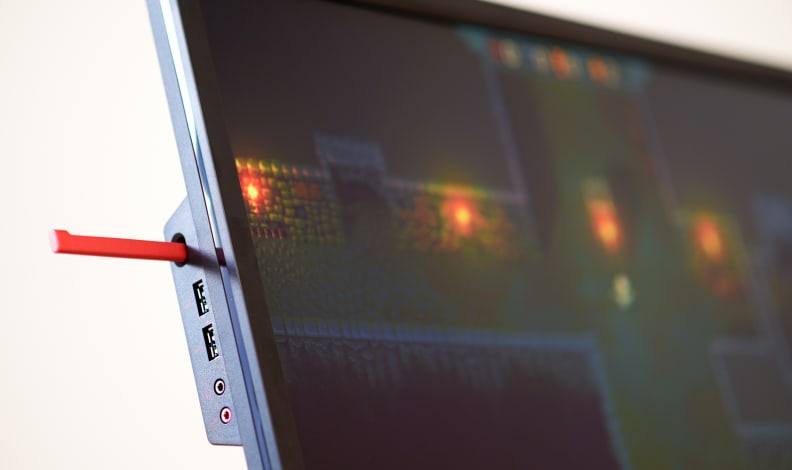
The 30T features a new retractable headphone hook that slides out of the left side. It's conveniently placed right above the necessary inputs for a gaming headset.
These are all serious quality-of-life improvements, but not all the changes are utilitarian. The stand now boasts a more attractive contour, and the built-in cable guide has shrunk from an oval to a circle. The headphone hook—previously red plastic that jutted unceremoniously from the rear of the stand—is now a metal, retractable arm, hiding to the left of the screen. The traditional black-and-red aesthetic of the XL Series remains, but the angular look has been scaled back a bit to favor rounder edges.
The biggest change comes in the form of BenQ's signature "S. Switch", or Swift Switch, a mouse-like controller that aims to help users quickly change the monitor's resolution or contrast to suit different games. The new "S. Switch Arc" is much smaller than previous versions, and sits in a small indentation in the base, rather than locking in at the side as with older XL monitors. This is probably the best new physical feature compared to the older models.
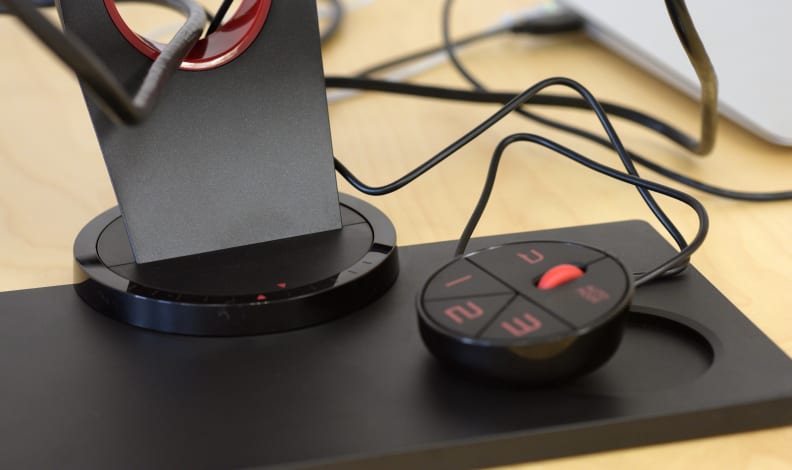
The new "S. Switch Arc" is smaller than previous versions, and sits conveniently in a small cutout on the monitor's base.
While the connectivity is basically the same, there are a couple new additions. Common inputs like VGA (D-sub), DVI-D, HDMI, DisplayPort, USB-B, and mini-USB are joined by two new microphone inputs. You'll also find two USB inputs, a 3.5mm audio jack, and a microphone input—the bread and butter of most modern gaming headsets—on the panel's left side. Grouping these ports with the headphone hook is a nice touch.
Some things haven't changed. For example, adjusting the height, tilt, or orientation of the screen is still a dream. The sturdy joints give under light but firm pressure, ensuring that the 30T doesn't accidentally move. In the box, you'll find the driver disc, S. Switch controller, power cord, and VGA/DVI cables. There's also a dust-resistant cover, which is especially useful if you plan to lug this thing to gaming competitions.
{{ photo_gallery "design" }}
The Experience
A cornucopia of niche gaming features
The 30T continues BenQ's tradition of including specialty features that double down on its reputation as a hardcore gaming device rather than your run-of-the-mill monitor with a fast response time. We've covered a lot of these features—like Motion Blur Reduction, low blue light, and refresh rate optimization—in prior reviews of XL Series monitors, so head there for a more complete breakdown.
The 30T is endowed with those same features, and they're still impressive, but it's the newest additions we're most excited about.
One new feature is the 30T's ability to display 20 different levels of color saturation, something that BenQ calls "20-Level Color Vibrance." Very saturated colors can slow down the amount of time it takes for a pixel to transform from one state to another, causing negative repercussions during fast-paced sequences, like ghosting, blurring, or color trailing. If you're playing a fast, competitive game like Counter-Strike, you might prefer to have speed over color vibrance. At the same time you may want to be able to enjoy a more vibrant experience when relaxing with the new Assassin's Creed. This setting allows the 30T to play to the strengths of both games.
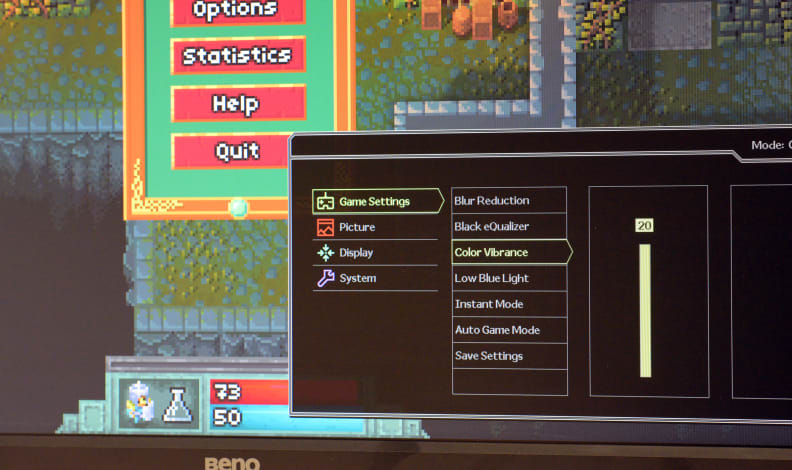
With "Color Vibrance" maxed out, the 30T takes on a much more vibrant, color-rich appearance, but at some cost to response time.
Another new feature is the "Auto" button, found on the S. Switch or in the software menu. Because it's highly customizable via variable refresh rates and unscaled resolution presentation, the 30T runs the gamut between modern, Full-HD games at more cinematic refresh rates and older, competitive titles at lower resolutions that are best with a lightning-fast frame rate. The new "Auto" button allows the 30T to sense the kind of game being played and switch to that "Game Mode" automatically.
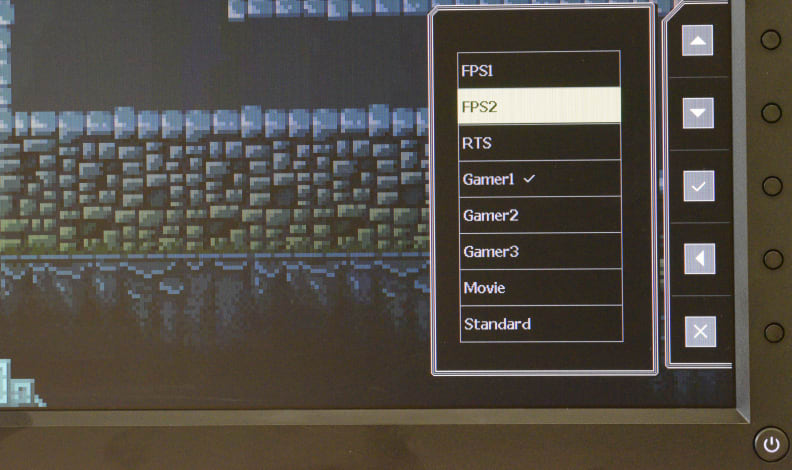
There are a multitude of built-in and customizable game modes, and you can download more from BenQ's website.
There are a few built-in game modes, like FPS (First-Person Shooter), RTS (Real-Time Strategy), and MOBA (Multiplayer Online Battle Arena), and more can be downloaded from BenQ's website. Naturally, the average user won't need most of these features, but this is hardly the monitor for your average user.
{{ photo_gallery "software" }}
The Picture
Not a powerhouse, but plenty of speed
Like the other XL Series monitors, the 30T has a native 1080p resolution and uses a TN (Twisted Nematic) panel. TN panels aren't new by any stretch (most older LCDs use them) but this kind of panel is capable of faster response time than newer IPS or VA panels, making it ideal for competitive gaming monitors like the 30T. On the other hand, TN boasts worse contrast performance than VA, and worse color fidelity than IPS, meaning the overall image quality is not going to blow any socks off.
Our tests revealed many similarities to previous XL monitors: lightning-fast response time, but at the expense of some color and contrast performance. Because of this, the 30T is a bad choice for certain tasks. The resolution is too low for professional photo or video editing, and the color space—though it meets basic requirements beautifully—isn't wide enough for something like print work.
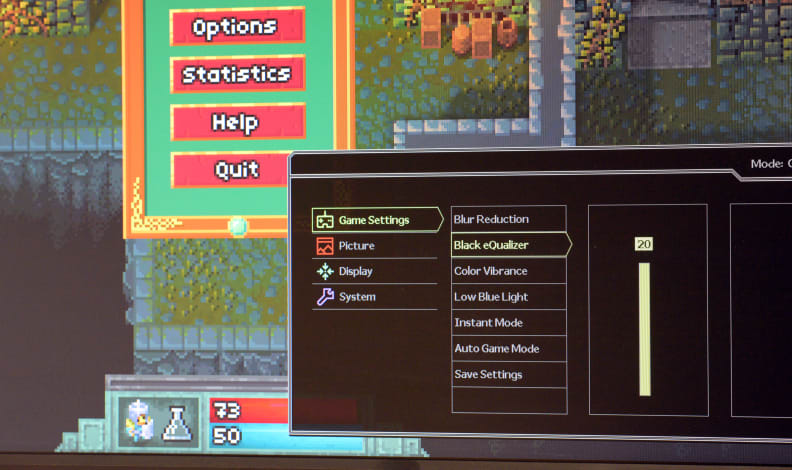
With Black eQualizer maxed out, the 30T's black, shadowy areas become much brighter, losing some definition and contrast for the sake of visibility.
While we'd normally lambast the 30T's poor black levels, they're actually somewhat advantageous. Fast response time—the lag between when you do a keyboard/mouse action and when it happens on screen—is naturally very important for twitchy, competitive gaming. Visibility within dark areas is also a high priority, and the 30T's somewhat luminous black levels make it easier for a special feature like Black eQualizer—a toggle that lightens dark, shadowy areas to increase visibility—to work as it should.
There's a drawback, of course. The 30T's shallow contrast and high luminance make it less ideal for watching movies or TV shows, as the screen looks more like a tablet (very bright, shallow contrast) than a TV (dimmer, higher contrast).
The Verdict
Perfect for the right crowd
The XL2430T isn't the best choice for many tasks—from a professional standpoint, it's a suitable companion to competitive gamers only. You could certainly still use it for casual tasks like web browsing or watching YouTube, but there are hordes of much cheaper monitors without all the bells and whistles that are just as suitable for those tasks.
Like past XL Series monitors, the 30T is a superb choice if you want more than just a fast response time to complement your gaming sessions. The laundry list of special features and display modes give this monitor a level of customization and flexibility that justifies its high price tag. While the performance isn't much improved upon previous XL monitors, the new physical features and software options are cause for some excitement.
If you're on the prowl for a high-end gaming monitor, the 30T is a great place to start. If you already own a similar BenQ monitor and are looking to upgrade, we recommend waiting for the next option in the lineup. With technologically superior "G Sync" versions of these monitors on the way, you might find waiting to pull the trigger isn't so bad after all.
Behind The Screens
The BenQ XL2430T (MSRP $499.99) makes improvements to the overall design and features of the company's popular gaming monitors, but doesn't punch above expectations in terms of raw performance. Its calling card is still a very fast response time, but it also suffers from the natural drawbacks of a TN (Twisted Nematic) panel. Shallow contrast and weak color fidelity make it a bad choice for certain tasks, but it's an unbeatable choice for fast, twitchy gaming.
Color Gamut
A color gamut is a visual illustration of the millions of colors a display can produce. While certain professional work in design and editing requires a "wider" color gamut, the standard monitor gamut (sRGB) is typically fine for most web-based tasks—and for most video games.
This is a strong area for the 30T, specially considering the natural weaknesses of its TN (Twisted Nematic) panel. We measured solid, accurate primary colors (red, green, blue), though cyan—a secondary color—is notably much too blue. This isn't the strongest color performance available, but it's good enough for the specific tasks this monitor is meant for.
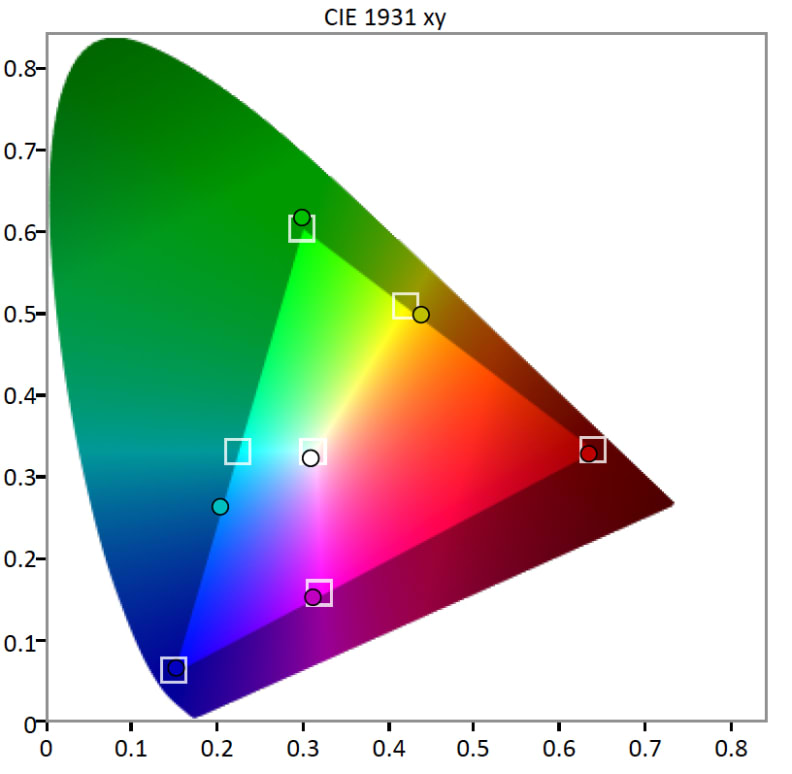
The 30T nails its production of the primary sRGB colors, but has some trouble producing cyan, instead producing a very blue-tinted version. Likewise, its grayscale is a bit on the blue side.
Gamma Curve
Gamma is a measurement of how quickly and how evenly a display adds luminance as it grows brighter from black to white. This is one area that the 30T struggled with. The gamma performance has obviously been tweaked to boost midtones and add visibility during gaming, but it comes at the cost of a natural-looking picture for things like video- or film-based movie content.
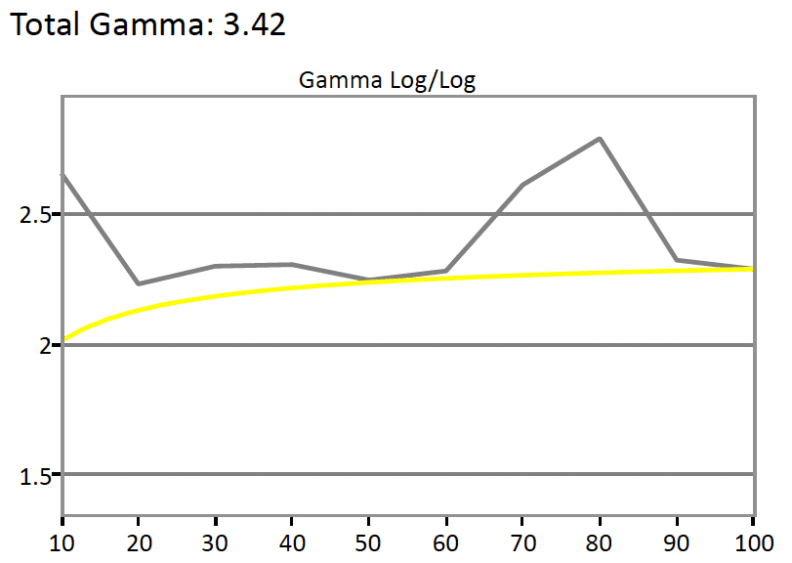
The 30T exhibits a very unusual gamma curve, boosting shadow- and highlight- detail at the expense of midtone resolution.
Color Curves
To make a long explanation short, the 30T struggles to smoothly transition between lighter/darker hues of the same color. To achieve its quirky gamma curve, the 30T leans heavily on blue production, losing some of the luminance and character of its red and green production. While the overall color space isn't negatively affected, it does mean that color gradations can occasionally exhibit small degrees of banding. While you won't notice this during most games, it's something that'll detract from the overall picture while viewing high-quality photo or video content.
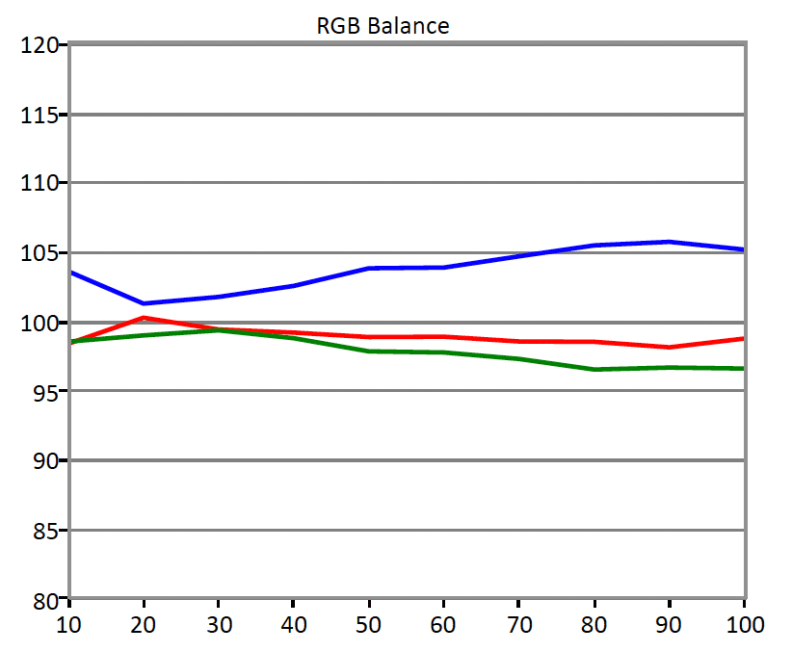
The 30T over-emphasizes blue at the expense of red and green production.
Grayscale Error
Grayscale error measures the "color" of white, gray, and black elements in a monitor's production of neutral shades. The ideal white point for monitors is called "D65," which roughly correlates to a color temperature of 6500K—a much cooler white than, say, a tungsten lamp. Across the range of the grayscale, the 30T doesn't exhibit much by way of grayscale variance, though it did test with a higher error average than we like to see. Ideal DeltaE for grayscale is 3 or less, and I measured 4.9—not bad, but not perfect.
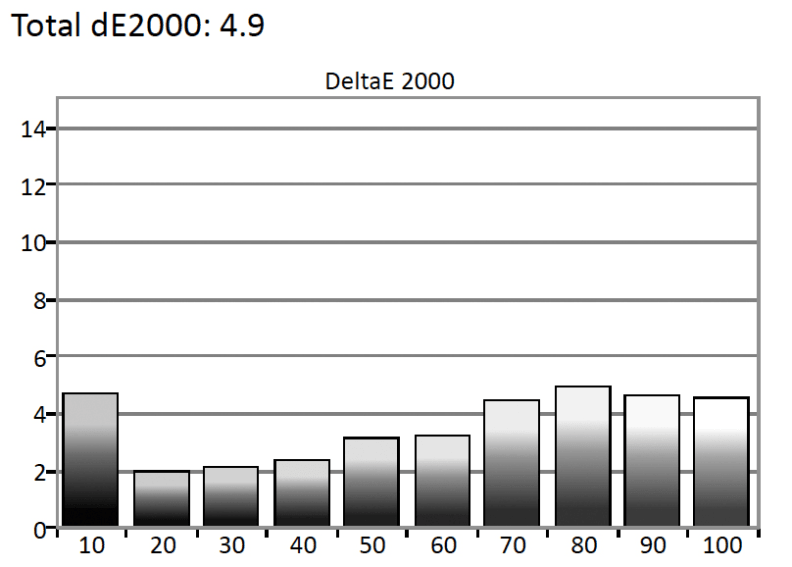
The 30T exhibits a small degree of grayscale tracking error, but nothing major.
Meet the tester
Lee was Reviewed's point person for most television and home theater products from 2012 until early 2022. Lee received Level II certification in TV calibration from the Imaging Science Foundation in 2013. As Editor of the Home Theater vertical, Lee oversaw reviews of TVs, monitors, soundbars, and Bluetooth speakers. He also reviewed headphones, and has a background in music performance.
Checking our work.
Our team is here to help you buy the best stuff and love what you own. Our writers, editors, and experts obsess over the products we cover to make sure you're confident and satisfied. Have a different opinion about something we recommend? Email us and we'll compare notes.
Shoot us an email